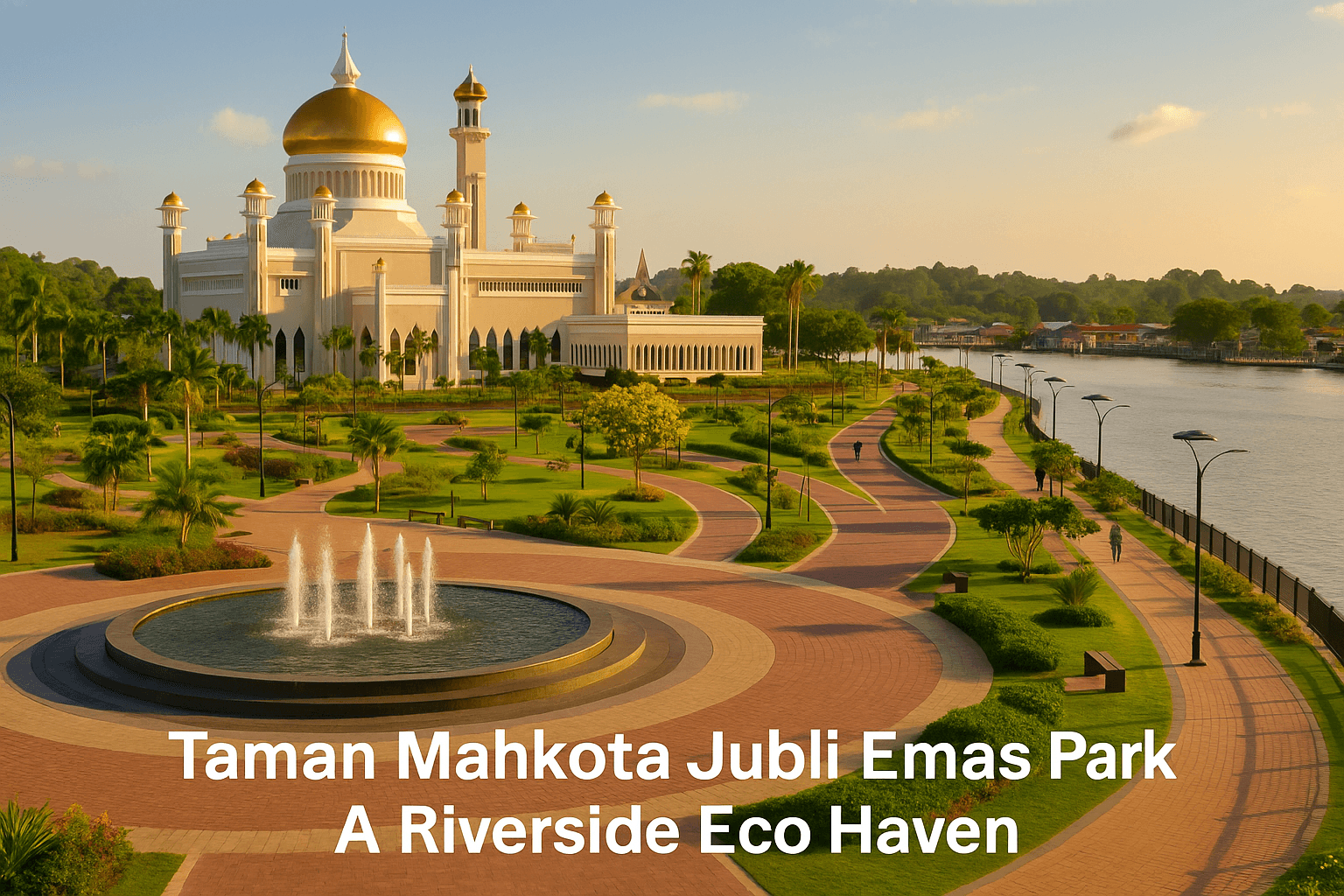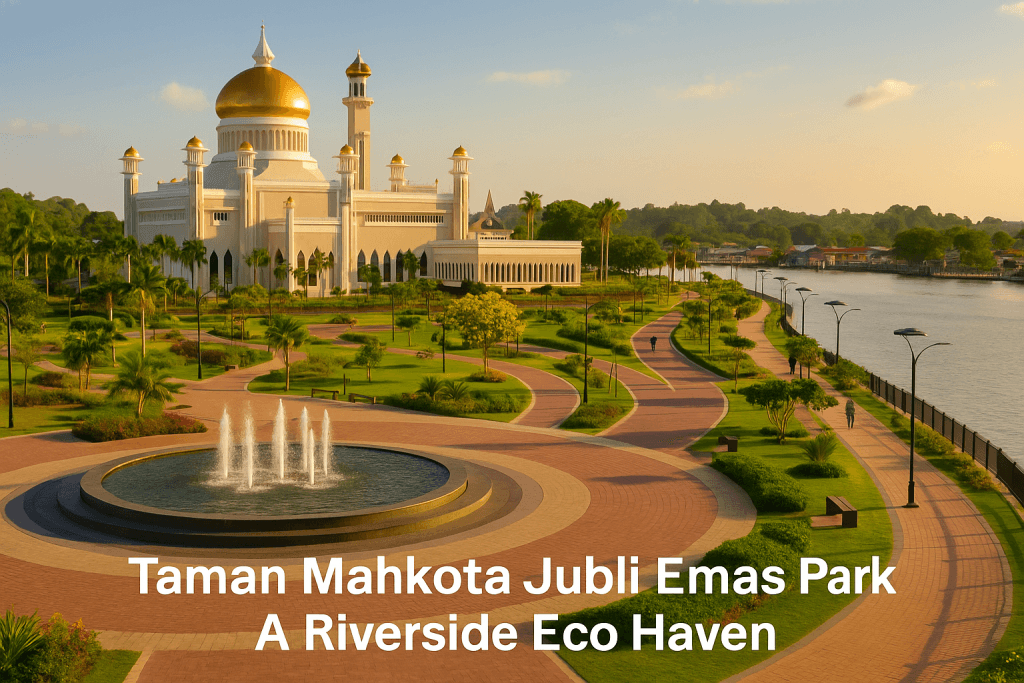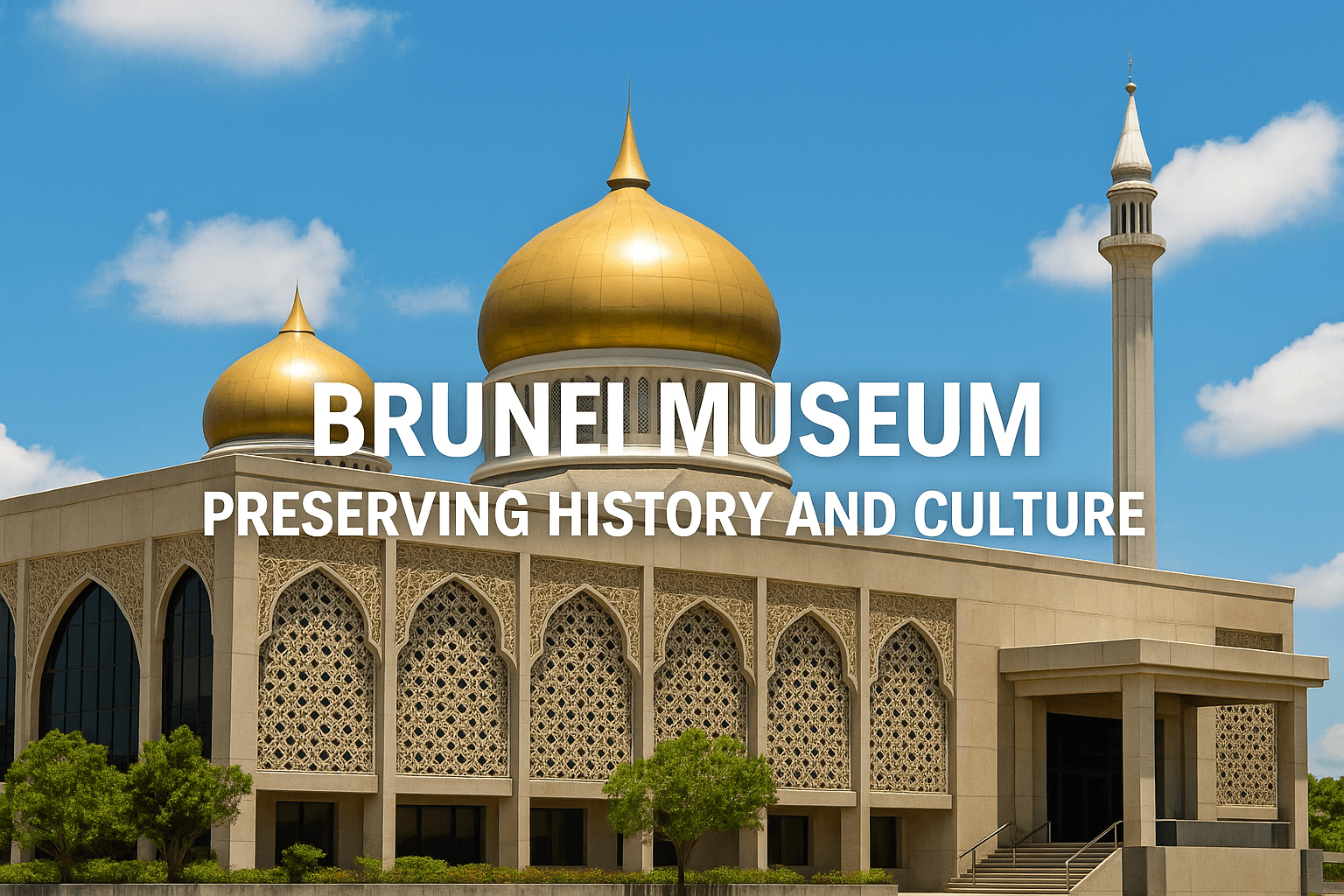Brunei Darussalam is a nation where tradition and modernity coexist gracefully. Among its many gems lies Taman Mahkota Jubli Emas Park – A Riverside Eco Haven, a sprawling green sanctuary in the heart of Bandar Seri Begawan. Often referred to as the jewel of the Brunei River, this lush urban park has become a symbol of ecological sustainability, community well-being, and cultural pride. Covering 30 hectares of riverside land, the park was inaugurated to celebrate the Golden Jubilee of His Majesty Sultan Haji Hassanal Bolkiah’s reign.
Far more than a recreational space, the park is a blueprint for Brunei’s vision of harmonizing urban development with environmental stewardship. Designed with winding walkways, manicured gardens, water features, and cultural installations, it offers residents and visitors alike a serene escape from the bustle of city life.
This article explores the historical significance, design philosophy, ecological value, and cultural essence of Taman Mahkota Jubli Emas Park – A Riverside Eco Haven, while uncovering why it is one of the most important landmarks in Brunei’s modern landscape.

Historical Background of the Park
The establishment of Taman Mahkota Jubli Emas Park – A Riverside Eco Haven was not an isolated event. It marked a milestone in Brunei’s national journey, celebrating 50 years of the Sultan’s reign in 2017. The initiative was part of a larger urban redevelopment project aimed at rejuvenating Bandar Seri Begawan and reinforcing its identity as a green capital city.
Historically, the area where the park now flourishes was once a neglected riverside zone with limited accessibility and modest development. Recognizing the untapped potential of the site, the government envisioned a transformation that would integrate Brunei’s cultural heritage with sustainable design. The result was the creation of an urban green lung that revitalized not only the riverside but also the spirit of the city.
Architectural and Landscape Design
The design of Taman Mahkota Jubli Emas Park – A Riverside Eco Haven reflects both modern landscape architecture and traditional Bruneian aesthetics. The park is structured with wide pedestrian boulevards, cycling paths, and elevated viewing decks that overlook the river. At the heart of the park lies a central fountain plaza, serving as a focal point for gatherings and cultural events.
Strategic use of local plants, flowering shrubs, and shady trees enhances the biodiversity of the space. Water channels mirror the movement of the nearby Brunei River, creating harmony between natural and built environments. Night lighting has been carefully designed to highlight the beauty of the landscape without disturbing wildlife habitats, making the park equally inviting after sunset.
The urban greening initiative also includes permeable pavements, eco-friendly drainage systems, and energy-efficient fixtures, aligning with Brunei’s sustainable development goals. The thoughtful combination of environmental consciousness and cultural symbolism makes the park an icon of national pride.
Ecological Importance
Beyond its beauty, Taman Mahkota Jubli Emas Park – A Riverside Eco Haven plays a vital ecological role. The park serves as a buffer zone for the Brunei River, helping to mitigate flooding risks during heavy rains. Its wetlands and green patches support a variety of bird species, butterflies, and aquatic life.
Native tree planting initiatives have improved air quality while stabilizing the soil along the riverbank. By absorbing carbon dioxide and reducing the urban heat island effect, the park contributes to a healthier environment for the capital city. Additionally, its open spaces act as natural filters, enhancing water purification and maintaining ecological balance.
In this sense, the park is more than a recreational facility; it is a living ecosystem that showcases Brunei’s dedication to environmental preservation.
Cultural Significance
Taman Mahkota Jubli Emas Park – A Riverside Eco Haven is not just a landscape of greenery; it is a cultural canvas. The park reflects Brunei’s identity through architectural motifs, public art installations, and community events. Festivals, parades, and traditional performances are often hosted in its open plazas, reinforcing its role as a gathering place for people of all ages.
For locals, the park represents unity and heritage. The name itself—Mahkota Jubli Emas—symbolizes the golden crown of the Sultan’s 50-year reign. Thus, every tree planted and every pathway constructed is imbued with cultural reverence. It stands as a national treasure that bridges the past, present, and future of Brunei.
Recreation and Community Engagement
As an inclusive space, Taman Mahkota Jubli Emas Park – A Riverside Eco Haven offers diverse recreational opportunities. Jogging tracks, cycling routes, and open lawns make it ideal for fitness enthusiasts, while shaded gardens and riverfront benches provide peaceful retreats for families and the elderly.
Children enjoy safe playgrounds, while photographers capture the park’s ever-changing scenery against the backdrop of the Sultan Omar Ali Saifuddien Mosque. Community yoga sessions, eco-awareness campaigns, and cultural workshops are frequently organized, fostering a sense of togetherness.
The park has also become a favorite venue for school excursions, encouraging students to learn about ecology and sustainability outside classroom walls.
A Riverside Landmark
The strategic location of Taman Mahkota Jubli Emas Park – A Riverside Eco Haven along the Brunei River enhances its charm. From its boardwalks, visitors can witness the timeless beauty of Kampong Ayer, the world’s largest water village. This juxtaposition of modern eco-design and traditional stilted homes creates a unique riverside panorama that reflects Brunei’s dual identity.
The sunset views from the park are among the most breathtaking in the region, drawing both locals and international travelers. As daylight fades, the golden hues of the mosque’s dome merge with the shimmering river, creating a picture-perfect moment that embodies Brunei’s serene beauty.
Tourism and International Appeal
Tourism in Brunei has been gradually evolving, and Taman Mahkota Jubli Emas Park – A Riverside Eco Haven plays a central role in attracting visitors. As an iconic landmark, it has been featured in travel guides, photography blogs, and cultural showcases. Eco-tourists appreciate the park’s sustainable design, while cultural travelers are drawn to its heritage significance.
The park has also become a venue for international events, further cementing its role as a destination that blends ecology with global cultural exchange. For travelers seeking authentic Bruneian experiences, the park represents both a starting point and a highlight of their journey.
Connection with Bandar Seri Begawan’s Urban Vision
The revitalization of Taman Mahkota Jubli Emas Park – A Riverside Eco Haven is part of a broader vision to position Bandar Seri Begawan as a livable, green, and culturally rich city. The park connects seamlessly with pedestrian bridges, river taxis, and nearby cultural institutions. It serves as a hub that ties together various parts of the city, making urban life more accessible and enjoyable.
The development has also spurred economic activity, boosting local cafes, markets, and cultural enterprises in the surrounding districts. In this way, the park is not just an ecological haven but also a driver of urban regeneration.
Symbol of National Pride
Brunei has always placed emphasis on the balance between tradition and progress. Taman Mahkota Jubli Emas Park – A Riverside Eco Haven exemplifies this principle. It is a physical representation of gratitude for the Sultan’s leadership, a commitment to ecological stewardship, and a gift to future generations.
For many Bruneians, walking through the park is more than leisure—it is a patriotic act, a way of participating in the nation’s narrative of sustainability and unity. Internationally, it signals that Brunei is a country deeply connected to its environment while embracing modern standards of urban living.
Future Prospects
As Brunei continues its journey toward sustainable development, Taman Mahkota Jubli Emas Park – A Riverside Eco Haven is expected to evolve further. Future enhancements may include expanded eco-education centers, smart technology integration, and additional biodiversity programs. The park’s role as a living laboratory for ecological innovation will likely grow, offering inspiration for other cities in the region.
Conclusion
Taman Mahkota Jubli Emas Park – A Riverside Eco Haven is more than just a green space; it is a symbol of Brunei’s aspirations, heritage, and environmental responsibility. With its historical significance, ecological functions, cultural vibrancy, and scenic beauty, the park has become a cornerstone of national identity and an international attraction.
It embodies the essence of Brunei: a nation that treasures its past while nurturing a sustainable future. For residents, it is a daily retreat into nature. For visitors, it is a memorable highlight of their journey. And for the nation, it is a proud reminder that harmony between people, culture, and the environment is not only possible but flourishing.


